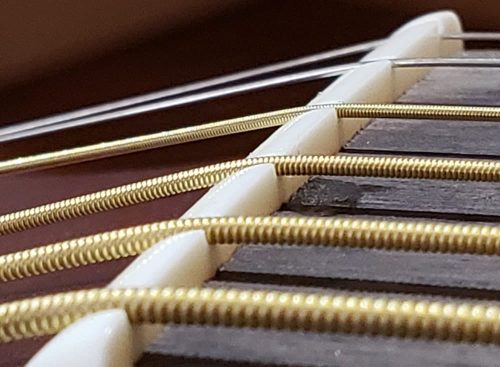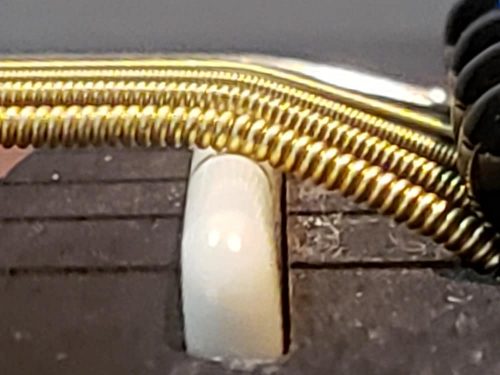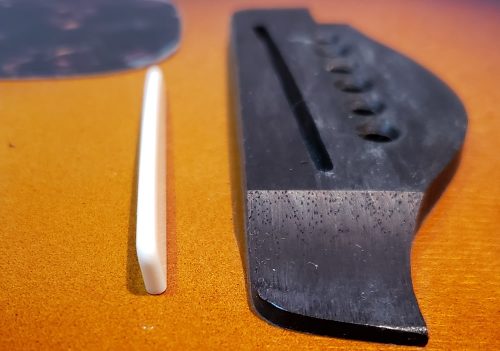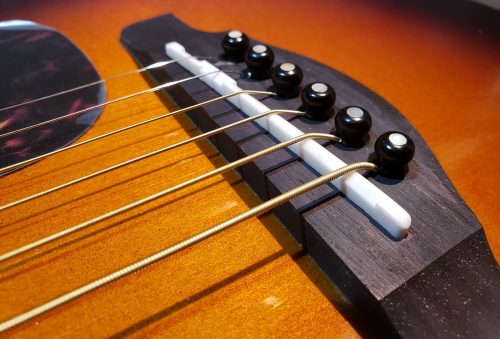Bone Saddle on a Yamaha JR2 Travel Guitar
The JR2 provides enough volume for personal playing, but would be drowned out in a group setting. Furthermore, it has little headroom, so an aggressive or dynamic attack won’t work on this guitar. We found that a consistent light or medium attack worked fine.
Yamaha produces decent overall construction, but with the minor construction flaws that you would expect on an instrument at this price point.
Factory Set Up
The factory set up was decent overall. Most of the strings were properly seated at the nut, and not buried or pinched, which can result in a muted tone and/or poor playability. However, the exception was the treble E string, which was set quite low – please see the below picture.The factory twelfth fret action measured at 6/64 and 5/64 for the bass E and treble E strings, respectively. Intonation was OK for most strings, but a bit off for the bass E string, particularly when forming chords. The factory saddle was a non-compensated plastic saddle with a 74.5 mm length and max height of 8 mm. The saddle had a 2.85 mm thickness, whereas the saddle slot thickness measured a touch over 3.0 mm. This resulted in a subtle forward lean and a visible gap on the back side.
Bone Saddle Upgrade
We replaced the factory saddle with one of our bone saddles designed to fit many Yamaha steel-string guitars. Our saddle is slightly larger than the factory saddle, so we made the minor adjustments to produce a snug fit. As a result, this produced a subtly fuller tone and improved intonation for the bass E string, which was apparently a combination of eliminating the forward saddle lean and saddle compensation.
Although the compensated saddle worked better for this particular guitar, we typically advise replacing a non-compensated saddle with a similar non-compensated saddle. Yamaha has often used a very sharp saddle angle rather than a compensated saddle. Placing a compensated saddle on a guitar designed to use a non-compensated saddle can have a negative impact on intonation. Increased compensation does not necessarily equal improved intonation. You should only use a compensated saddle in place of a non-compensated saddle if there are specific intonation issues you with to address.
Questions?
Do you have questions about which saddle would work best for your Yamaha guitar? Please see our Guide to Yamaha Acoustic Saddles for more information.




